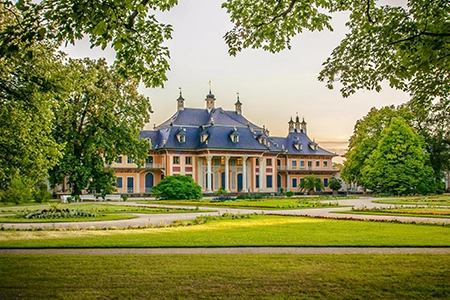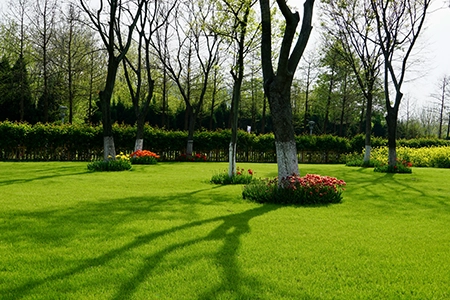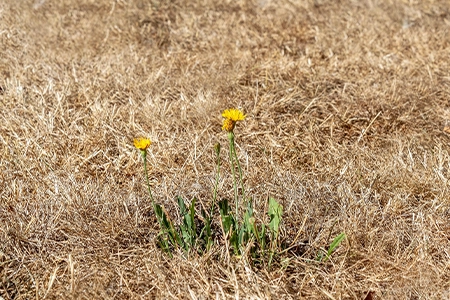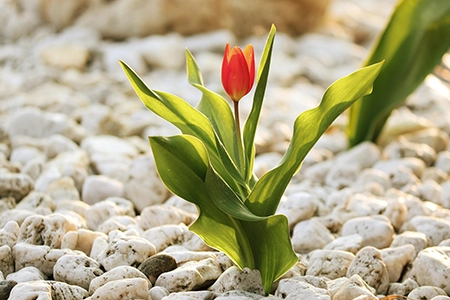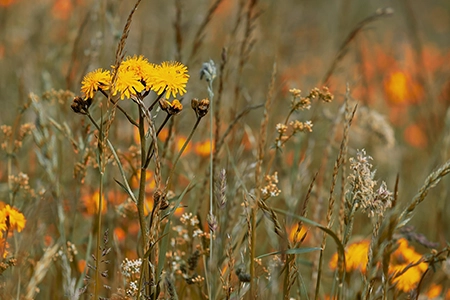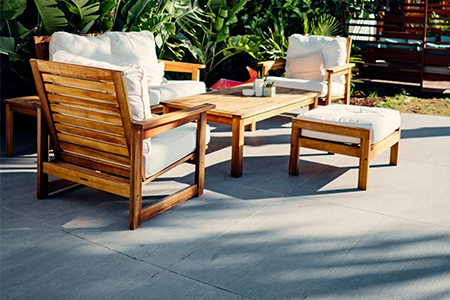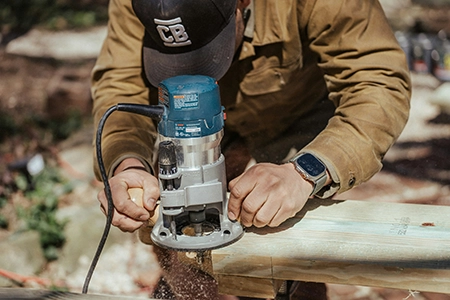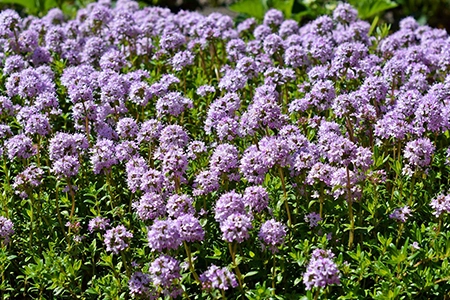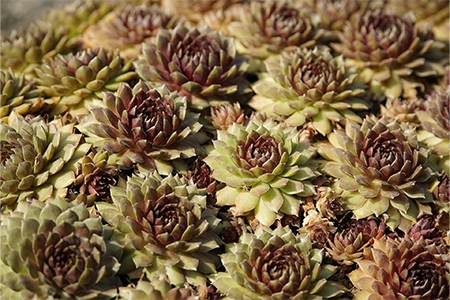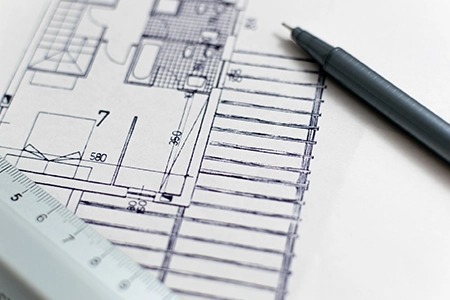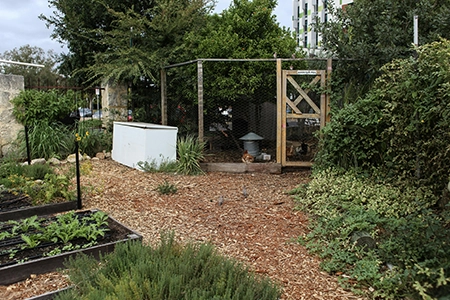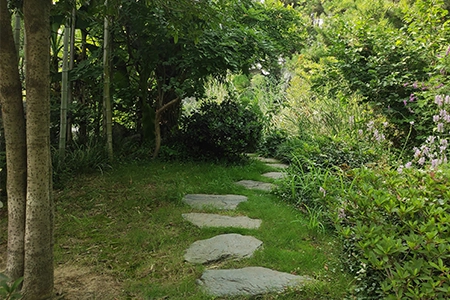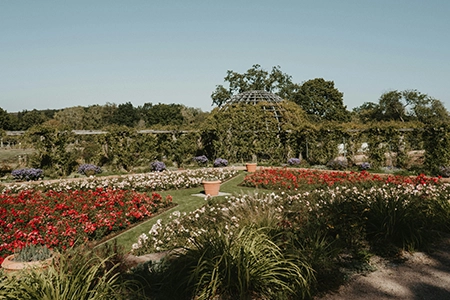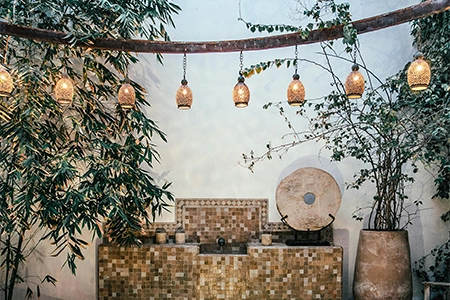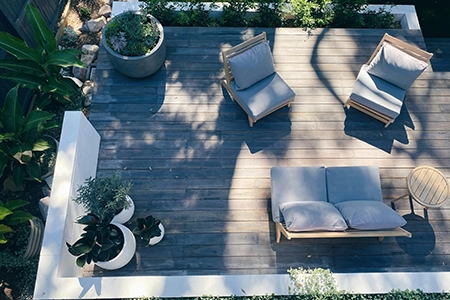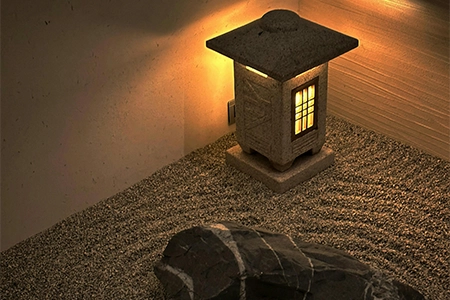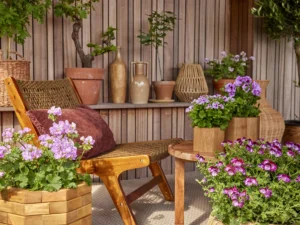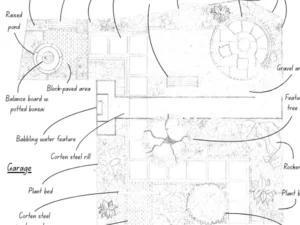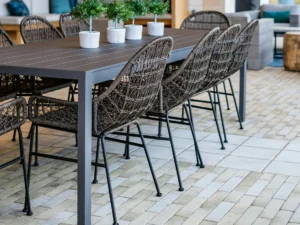Lawn has long been seen as the default choice for garden design, evoking images of tidy green spaces and neatly mown perfection. But as outdoor living trends evolve, more and more homeowners are opting for a garden without grass.
Whether it’s to cut down on maintenance, reduce water consumption, or create a more functional and stylish outdoor space, ditching the traditional lawn opens up a world of creative possibilities.
Why Lawn Remains a Popular Choice
There’s no denying the classic appeal of a lush lawn. It provides an open, uniform area that’s ideal for playing, relaxing, and entertaining. People often choose it for its familiarity, simplicity, and perceived low cost. It’s also considered a neutral canvas, making it easy to design around.
Additionally, a well-kept lawn is traditionally associated with kerb appeal, making a home appear tidy and cared for. For families with children or pets, a lawn offers a soft and safe surface for outdoor activities.
It’s also a go-to option for homeowners seeking a space that can quickly be refreshed with minimal changes. In many cases, lawn is chosen purely out of habit or societal norms; after all, it’s what most people expect when they picture a garden.
The Downsides of Traditional Lawns
While lawns may be a traditional favourite, they come with several drawbacks. Large areas of grass require regular mowing, watering, feeding, and pest control. This makes them high-maintenance and resource-intensive.
Lawns also offer little biodiversity and can struggle in areas affected by drought or heavy use. For those with smaller gardens or an interest in sustainability, a grass-heavy design may no longer be the most practical choice.
Furthermore, lawns often require chemical treatments to stay green and weed-free, which can be harmful to local wildlife and water systems. In shaded areas or under trees, grass can also become patchy and unattractive, leading to ongoing frustration and expense trying to maintain an even appearance.
Top Lawn Alternatives
- Gravel garden
- Wildflower turf
- Paving slabs and concrete block paving
- Decking
- Creeping thyme
- Sedum
Gravel Garden
A gravel garden replaces a traditional lawn with loose stone, creating a sleek, low-maintenance, and water-wise alternative. Popular for their modern or Mediterranean-style look, gravel gardens are often complemented by drought-tolerant plants like sedum, lavender, and ornamental grasses, which thrive in well-drained conditions.
The overall effect is effortlessly stylish, with texture and colour coming from the mix of stones and plant choices rather than expansive greenery.
While gravel gardens don’t provide the soft, open play space that lawns offer, making them less ideal for households with young children or active pets and they bring a host of other benefits. They improve drainage, helping to prevent surface water build-up, especially important in areas prone to heavy rainfall.
They also significantly reduce the need for watering, mowing, or feeding, making them a great option for busy homeowners or those looking for a more sustainable approach. Incorporating white pebbles for garden pathways or using decorative stones for garden borders and focal points can add layers of interest and elevate the overall design.
Gravel Garden Installation
Start by removing any grass, weeds, and debris from the area to create a clean base for your gravel garden. Once cleared, level the ground carefully to avoid pooling or uneven patches later on. Lay down a high-quality weed-suppressing membrane to help prevent unwanted growth from creeping through over time.
Spread gravel evenly across the surface, ideally to a depth of at least 5cm to ensure it stays securely in place and offers consistent coverage. To enhance both visual appeal and function, consider mixing gravel sizes and colours for texture and contrast. Add focal points such as large planters, architectural boulders, or groupings of drought-tolerant plants like lavender, sedum, or ornamental grasses.
These features not only break up the space but also bring year-round interest and support local wildlife. Edging the area with stone or metal garden edging can also help keep gravel contained and define the layout for a polished finish.
Wildflower Turf
Unlike a standard lawn, wildflower turf transforms your garden into a habitat-rich, pollinator-friendly space that evolves with the seasons. Bursting with colour and movement, it supports bees, butterflies, and other beneficial insects, making it an ideal choice for those looking to boost biodiversity.
Its informal, meadow-like aesthetic adds a touch of natural charm and can soften the overall look of a garden, especially when combined with rustic features or soft landscaping. However, wildflower turf does come with some considerations. It can appear a little untidy if not maintained properly, which may not suit those who prefer a manicured finish.
Occasional cutting, typically once or twice a year, is essential to promote healthy regrowth and prevent more dominant species from taking over. Despite these minor drawbacks, wildflower turf remains one of the most beautiful and environmentally friendly grass alternatives for lawns, offering a unique mix of visual appeal and ecological benefit.
Wildflower Turf Installation
To install wildflower turf, start by preparing the soil, removing all existing vegetation, including grass and weeds, to give your new plants the best chance to thrive. Lightly till or rake the soil to create a level, crumbly surface. Then, roll out the wildflower turf just as you would with standard lawn turf, ensuring each section is tightly butted up against the next with no gaps.
Once laid, press it down gently using a roller or by walking over it with flat-soled shoes to ensure good soil contact. Water thoroughly after installation, and continue watering regularly, especially in the first 4 to 6 weeks, until the wildflower meadow is well established. Avoid mowing in the early stages to allow flowers to bloom and roots to settle.
Paving Slabs and Block Paving
Hardscaping options like paving slabs and concrete block paving offer a durable, long-lasting solution for outdoor surfaces. They’re ideal for patios, walkways, and entertaining areas, providing a clean and practical foundation that withstands heavy foot traffic and the elements.
While they may lack the natural softness and cooling effect of a grass lawn, their strength, low upkeep, and versatility make them an increasingly popular choice for modern gardens.
These hard surfaces are especially useful when it comes to garden zoning, clearly defining different functional areas such as outdoor dining, lounging, or even cooking. Paving can be laid in a variety of patterns, colours, and finishes to complement the overall design scheme.
To prevent the space from feeling too stark or uniform, you can incorporate decorative stones for garden accents, such as borders, stepping-stone paths, or feature areas. These additions not only enhance visual interest but also soften the look of paved spaces, making the overall design feel more balanced and inviting.
Paving Slabs and Block Paving Installation
Begin by marking out the area where your paving will go, then dig down to a depth of approximately 200mm to create a stable foundation. This depth allows space for the sub-base, sand, and paving itself. Next, add a layer of compacted sub-base material, such as Type 1 crushed stone, to a depth of about 150mm. Compact it thoroughly using a plate compactor to ensure a solid, long-lasting base.
On top of the sub-base, spread a layer of sharp sand around 50mm thick. Level and compact the sand to create a smooth, even bed for your paving slabs or concrete block paving. Carefully lay each slab or block in your chosen pattern, using spacers if needed to maintain even gaps.
Once all the paving is in place and levelled, finish by sweeping a jointing compound or kiln-dried sand into the gaps to lock everything together. Lightly water if using a setting compound, and allow everything to settle and cure before using the area.
Decking
Decking adds warmth, texture, and a natural aesthetic to outdoor spaces, making it a popular choice for both contemporary and traditional garden designs. It’s particularly effective for creating level or raised platforms, perfect for seating areas, alfresco dining zones, or even outdoor kitchens. Decking can also be used to bridge uneven terrain, offering a seamless transition between different areas of the garden.
Compared to a traditional lawn, decking eliminates the need for mowing, watering, and fertilising, which makes it a more practical and time-saving option for many homeowners. It does require occasional maintenance such as staining, sealing, or treating the wood to prevent weather damage and keep it looking its best. These tasks are generally less frequent than weekly lawn care.
Additionally, decking provides a clean, dry surface that can be enjoyed year-round, even after rain, especially when anti-slip boards or composite materials are used. This makes it a versatile and functional alternative for those seeking a low-maintenance yet stylish garden feature.
Decking Installation
Start with a firm sub-frame made from treated timber or composite boards, ensuring the structure is stable and durable. The treated timber is resistant to weathering, while composite boards offer a long-lasting, low-maintenance option.
It’s crucial to ensure proper drainage and ventilation underneath the structure to prevent moisture buildup, which could lead to rot over time. Installing a weed membrane beneath the frame can also help keep unwanted growth at bay.
Adequate airflow and drainage are key to extending the longevity of your garden structure, ensuring that it stays solid and functional for years to come, even in the face of varying weather conditions.
Creeping Thyme as a Lawn Alternative
Low-growing plants like creeping thyme create a lush, vibrant carpet effect without the constant upkeep of mowing. This hardy plant is not only fragrant and pollinator-friendly but also tough underfoot, making it an excellent lawn alternative for areas that get regular foot traffic.
Creeping thyme forms a dense, aromatic cover that adds both beauty and functionality to your garden, especially when used for pathways, small spaces, or informal sections. While it may take some time to establish and can be more expensive initially, the long-term benefits far outweigh the initial investment.
Once settled, creeping thyme requires minimal maintenance, offering a sustainable and eco-friendly option for homeowners. Additionally, it supports local biodiversity by attracting bees, butterflies, and other beneficial pollinators, making it an invaluable choice for those looking to create a wildlife-friendly garden.
Planting Creeping Thyme
To start, remove the turf and clear the area of any weeds or debris. Then, dig and prepare the soil, ensuring it’s well-drained and slightly loose for optimal root growth. It’s a good idea to mix in some organic matter to enrich the soil.
Next, plant creeping thyme in staggered rows to encourage even coverage and allow the plants to spread naturally. After planting, keep the area well-watered until the creeping thyme is fully established, ensuring the soil remains moist but not waterlogged.
Once established, the plants will be relatively drought-tolerant, but regular watering during the early stages is essential for successful growth. As the plants mature, they will create a thick, lush carpet that thrives with minimal maintenance.
Sedum as a Lawn Alternative
Sedum, often known as “stonecrop,” is a hardy, low-growing plant that forms a dense, vibrant carpet of colour, making it a perfect lawn alternative. Its succulent nature allows it to thrive in dry conditions, requiring minimal watering once established. Sedum is an excellent choice for areas that need coverage but don’t see heavy foot traffic, such as garden borders, rockeries, or dry, sunny spots.
One of the greatest advantages of sedum is its ability to add texture and visual interest to your garden while supporting local pollinators like bees and butterflies. The variety of colours and textures within the sedum family means it can be used to create stunning ground cover or as an accent plant within larger garden designs.
While sedum requires little maintenance once established, it can take time to spread, so patience is key. Additionally, sedum can be more costly to establish initially, but its long-lasting durability and low-maintenance nature make it an ideal investment for homeowners seeking an eco-friendly and visually appealing lawn alternative.
Planting Sedum
To begin, clear the area of any existing grass and weeds. Then, prepare the soil by loosening it and ensuring proper drainage, as sedum thrives in well-drained, slightly dry soil.
You can improve soil quality by mixing in some organic matter for better root penetration.
Plant sedum in clusters or staggered rows, ensuring enough space for it to spread naturally.
Water regularly until the plants are fully established, keeping the soil moist but not overly saturated. Once established, sedum will require very little watering and will flourish in sunny spots with minimal upkeep. It will form a thick, resilient carpet that withstands drought and will add a striking, low-maintenance touch to your garden.
Designing a Functional Lawn-Free Garden
Without a lawn dominating the space, the possibilities for creative and functional garden design open up dramatically. Gone is the need to maintain a uniform green carpet without grass; your garden becomes a canvas for unique features and thoughtful design.
This freedom allows for more defined areas for different activities, such as cosy outdoor dining, tranquil reading corners, or vibrant plant displays.
A garden without grass encourages more considered planning, where every square foot serves a purpose. You can experiment with hardscaping elements like paving slabs, decking, or gravel gardens that not only provide structure but also enhance the overall aesthetic.
By incorporating diverse textures and materials, you can create a garden that feels like a true extension of your home, offering both beauty and functionality year-round.
Zoning is Key
Zoning is key when designing a lawn-free garden. Start by defining distinct areas based on how you intend to use your space. Decking or paving slabs are ideal for creating outdoor dining or lounging zones, offering a clean and level surface that’s practical for furniture and social gatherings.
Choose materials like concrete block paving for a modern, structured look or timber decking for a warmer, more natural feel. These surfaces are also low-maintenance compared to grass, requiring occasional cleaning rather than regular mowing.
Meandering Pathways
Pathways made from gravel gardens or white pebbles for garden walkways can guide movement through the space while adding a decorative element. These materials are excellent for drainage, visually soften the landscape, and can be styled to suit a minimalist or rustic aesthetic.
To add charm and an extra special touch, you can edge your paths with decorative stone, timber or corten steel. This will help define your borders and maintain clean, structured lines.
Edging not only enhances the overall design but also keeps loose materials like gravel or mulch in place.
Make Plant Beds the Main Feature
Planting beds become central features in lawn-free designs, providing opportunities to layer texture, height, and colour. Whether you prefer a structured look with low box hedging and neat rows of shrubs or a wilder style with drifts of wildflower meadow or sedum, your planting becomes the visual focus.
Raised beds not only add depth and structure but also make gardening more accessible and help improve drainage. For compact or urban gardens, vertical gardens and wall planters can offer bursts of greenery without taking up floor space.
Pergolas and Purpose
To further elevate the ambience and functionality of your garden, consider incorporating built-in seating areas that blend seamlessly with the landscape, offering both comfort and aesthetic appeal. Pergolas and gazebos can provide much-needed shade and shelter, allowing you to enjoy your garden regardless of the weather while also creating a more intimate and inviting atmosphere. These structures can be adorned with climbing plants, fairy lights, or draped fabrics to add a touch of romance and elegance.
Adding elements such as fire pits, water features, or even a small pond can serve as captivating focal points, drawing the eye and creating a relaxing, peaceful atmosphere. The gentle crackling of a fire or the soothing sound of flowing water can introduce sensory richness to your space, enhancing the overall experience of your garden.
Illuminate your Garden
Lighting is a key element in extending the usability and beauty of your garden into the evening hours. Strategically placed LED uplights can cast a soft, dramatic glow on trees, sculptures, or architectural features, highlighting their natural beauty and adding a touch of sophistication to your outdoor space. String lights draped across pergolas, fences, or trees create a warm and inviting atmosphere, perfect for cosy nights or outdoor gatherings.
In addition to aesthetics, lighting also enhances safety by illuminating pathways, steps, and seating areas, making your garden more functional and secure after dark. Soft, ambient lighting can transform your outdoor space into a magical retreat, providing both practical illumination and a serene, enchanting vibe.
A Nod to Small Urban Gardens
In small urban gardens, every inch of space matters, and a traditional lawn can quickly feel like wasted potential. Replacing the grass with alternatives like paving slabs, decking, or even a mini wildflower meadow allows you to maximise the area, making it both functional and visually appealing.
These lawn alternatives open up opportunities to create defined zones for different activities, whether it’s a relaxing seating area, a dining space, or a mini herb garden. Furthermore, using alternatives like gravel, decking, or wildflower turf adds layers of interest to the space.
Incorporating different textures, heights, and planting schemes helps create depth, making a compact garden feel much more expansive and inviting. By replacing lawn with creative landscaping solutions, you not only increase the utility of the space but also enhance its visual appeal, giving it a more modern and stylish edge.
This approach is particularly beneficial in urban settings where green space is limited, allowing you to transform even the smallest gardens into multifunctional outdoor retreats.
Better Drainage Through Smart Landscaping
One of the major advantages of replacing traditional lawns with smarter landscaping options is the improved drainage they provide. Lawns, with their dense root systems, can sometimes create a barrier that prevents proper water absorption, leading to pooling or runoff.
In contrast, alternatives like gravel gardens, concrete block paving, and permeable surfaces allow rainwater to filter through the soil naturally, helping to reduce surface runoff and encourage groundwater replenishment.
As climate change leads to more intense rainfall and shifting weather patterns, managing drainage in gardens becomes an essential factor in ensuring long-term sustainability. These lawn alternatives not only improve the health of the garden by preventing waterlogging but also help reduce the risk of flooding and soil erosion.
By integrating materials like permeable paving or gravel, homeowners can create a garden that is both eco-friendly and resilient to changing weather conditions, ultimately contributing to a more sustainable landscape.
Saving Money and Boosting Efficiency
Many grass alternatives for lawns, while sometimes requiring a higher initial investment, can prove to be more cost-effective in the long run. Low-maintenance options like creeping thyme, sedum, and gravel paving not only reduce the need for regular watering and mowing but also require fewer chemicals and minimal upkeep.
These alternatives help lower water consumption and reduce the use of fertilisers and pesticides, ultimately saving both time and money. In addition to these financial benefits, some lawn alternatives can improve the energy efficiency of your home. For instance, shaded gravel gardens or areas with strategically planted trees provide natural cooling by blocking harsh sunlight and promoting airflow around your home.
This can reduce the need for air conditioning, helping to lower cooling costs during warmer months. By opting for these sustainable landscaping choices, homeowners can see long-term reductions in household expenses while simultaneously enhancing their property’s appeal, making it more attractive to potential buyers.
A Lawn-less Design
Even with all the ideas, inspiration, and know-how at hand, crafting a garden that feels both practical and beautiful can still be surprisingly challenging, especially when we naturally fall back on the familiar comfort of a traditional lawn.
Rethinking what a garden can be means stepping away from habit and daring to imagine something different: a space where every corner serves a purpose and every element tells part of the story.
In our next blog, we’ll take you behind the scenes of how we do that, sharing the journey of designing a unique, lawn-less garden that blends texture and personality and has a Japanese-style twist.
Conclusion
Creating a garden without grass doesn’t mean sacrificing beauty or usability. From decorative stones for garden charm to wildflower meadows that buzz with life, there are countless lawn alternatives to explore. Whether you’re trying to cut down on maintenance, embrace sustainability, or maximise a small space, lawn-free gardening offers style, practicality, and function. With thoughtful design and installation, your outdoor space can flourish without a single blade of grass.
Further Reading
How Landscaping can Boost your Property’s Value
The Meaning of Good Garden Design

